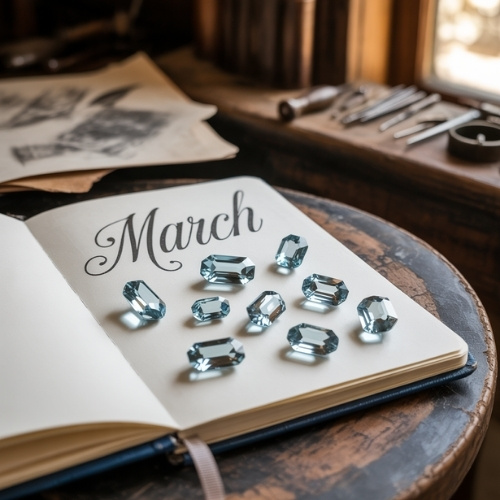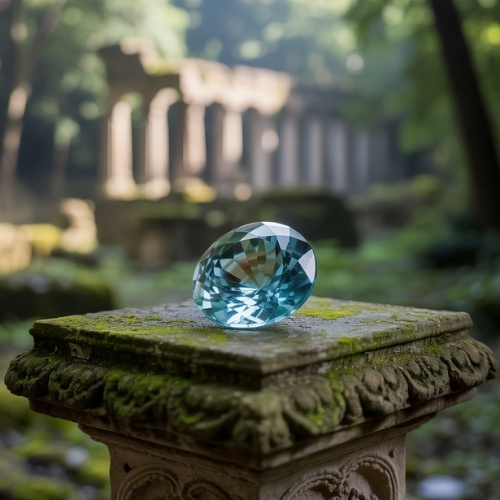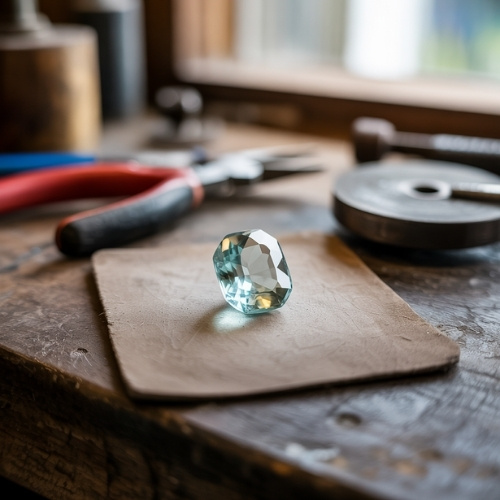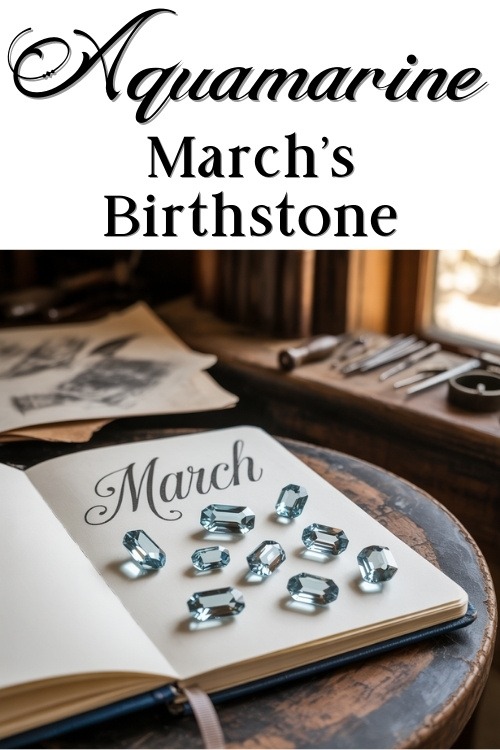March ushers in the promise of spring. Longer days, gentler skies, and the serene blue shimmer of aquamarine. Officially recognised as the birthstone for March, aquamarine has captivated wearers for centuries with its oceanic hues and calming energy. While modern lists sometimes include bloodstone as an alternative, aquamarine remains the gem most closely tied to the month’s renewing spirit.
Why is Aquamarine March’s Birthstone?
Aquamarine’s soft blues and sea-green tones are the perfect match for March’s balance of winter’s end and spring’s beginning. And, as a gem that symbolises clarity, peace, and emotional renewal, its qualities perfectly reflect the fresh, cleansing feel of early spring.
Aquamarine officially joined the modern birthstone list in 1912. Since then it has remained a favourite among jewellers and gemstone lovers. Today, wearing or gifting aquamarine in March is a way to celebrate serenity, renewal, and the deep connection between water and life.
🔗 Explore the History of Birthstones to learn more about this timeless tradition.
History and Lore of Aquamarine
Aquamarine’s story has always been entwined with the sea. Ancient Greeks believed it was a gift from Poseidon, god of the ocean. In one version of the myth, the gemstone formed from his tears as they mingled with the waves. Another tells that drops of seawater from his trident crystallised into aquamarine whenever he rose from the depths.
For sailors, these legends made aquamarine a symbol of safe passage and calm waters. They carried it as a protective talisman to soothe storms and guide them home. Likewise, Roman tales shared similar themes, describing aquamarine as a treasure of the sea nymphs who rewarded those who honoured the ocean.
By the medieval period, the gem’s reputation extended beyond the sea. Known as the “knight’s stone,” aquamarine was thought to bring courage and victory to warriors in battle. It was also prized by healers and seers, who believed it could reveal truth and strengthen friendships or love.
From Poseidon’s myths to medieval lore, aquamarine has always been seen as a stone of protection, courage, and enduring calm. Forever tied to the ocean’s shimmering heart.
🔗 Dive deeper into Aquamarine Myths and Legends
Meaning, Symbolism, and Energy
Aquamarine, sometimes called the Stone of Serenity, embodies calm, clarity, and gentle courage. Its tranquil blue tones echo the stillness of water, symbolizing emotional balance and renewal. Many believe it soothes anxious thoughts, encourages self-compassion, and supports emotional healing. Making this gem a peaceful companion for everyday life.
Spiritually, aquamarine is said to connect with both the throat and heart chakras, inspiring open communication and heartfelt understanding. It encourages truth, honesty, and the confidence to speak with kindness, while also nurturing compassion and deeper emotional bonds.
🔗 Discover the Symbolic and Spiritual Meanings of Aquamarine Crystals
Varieties, Colours, and Buying Tips
Aquamarine belongs to the beryl family, the same mineral group as emerald and morganite. It forms in shades of light blue to blue-green, with the finest stones displaying a strong, even sky-blue colour.
Most aquamarines are free of inclusions and can be found in large, beautifully transparent crystals. Their gentle hue is often enhanced with light heat treatment to remove greenish tones and bring out purer blues. A standard and seemingly permanent practice in the trade.
When buying aquamarine, focus on colour saturation, clarity, and cut. Stones with vivid blue tones and excellent transparency are most prized, while step cuts (emerald or baguette shapes) are especially popular for showing off the gem’s glassy brilliance.
To care for aquamarine, wash gently with warm soapy water and a soft brush. Avoid harsh chemicals or ultrasonic cleaners, as these can damage the stone.
🔗 Working with aquamarine gemstones? Have a read of my Jewellers Guide to Aquamarine
Fun Facts About Aquamarine
- Named after the sea. The name aquamarine comes from the Latin aqua marina, meaning “water of the sea,” a perfect reflection of its clear ocean-blue colour.
- The largest cut aquamarine weighs over 110 kilograms. Known as the Dom Pedro, this massive gemstone is on display in the Smithsonian Institution in Washington, D.C.
- Royal connections. The Hirsch Aquamarine once belonged to France’s Louis XV. It’s not the only aquamarine to grace a royal collection, the British crown jewels contain many aquamarines.
Modern Alternatives for March
Although aquamarine is the official March birthstone, bloodstone is sometimes listed as a modern alternative.
Bloodstone is a deep green chalcedony flecked with red spots, symbolises strength, vitality, and courage. It’s long been considered a talisman for perseverance and renewal.
Both stones reflect different sides of March, aquamarine’s serenity and bloodstone’s vitality, and offer a great contrast in appearance. Making either a meaningful choice for the month’s celebrations.
Aquamarine’s Enduring Place in March Birthstone Lore
From ancient sailors to modern jewellery lovers, aquamarine has long held a special place in the gem world. Its clear blue tones reflect not only the ocean’s depths but also the open skies of early spring, symbolising renewal, calm, and emotional clarity.
Whether you’re celebrating a March birthday, adding to your collection, or simply drawn to its peaceful energy, aquamarine remains a timeless reminder of balance, beauty, and the ever-refreshing power of nature.
🛍️ Looking for a sustainable aquamarine for your next design? Browse our pre-owned aquamarines here
📌 Save this post so you can revisit Aquamarine, March’s Birthstone, whenever you need a moment of calm or inspiration.




